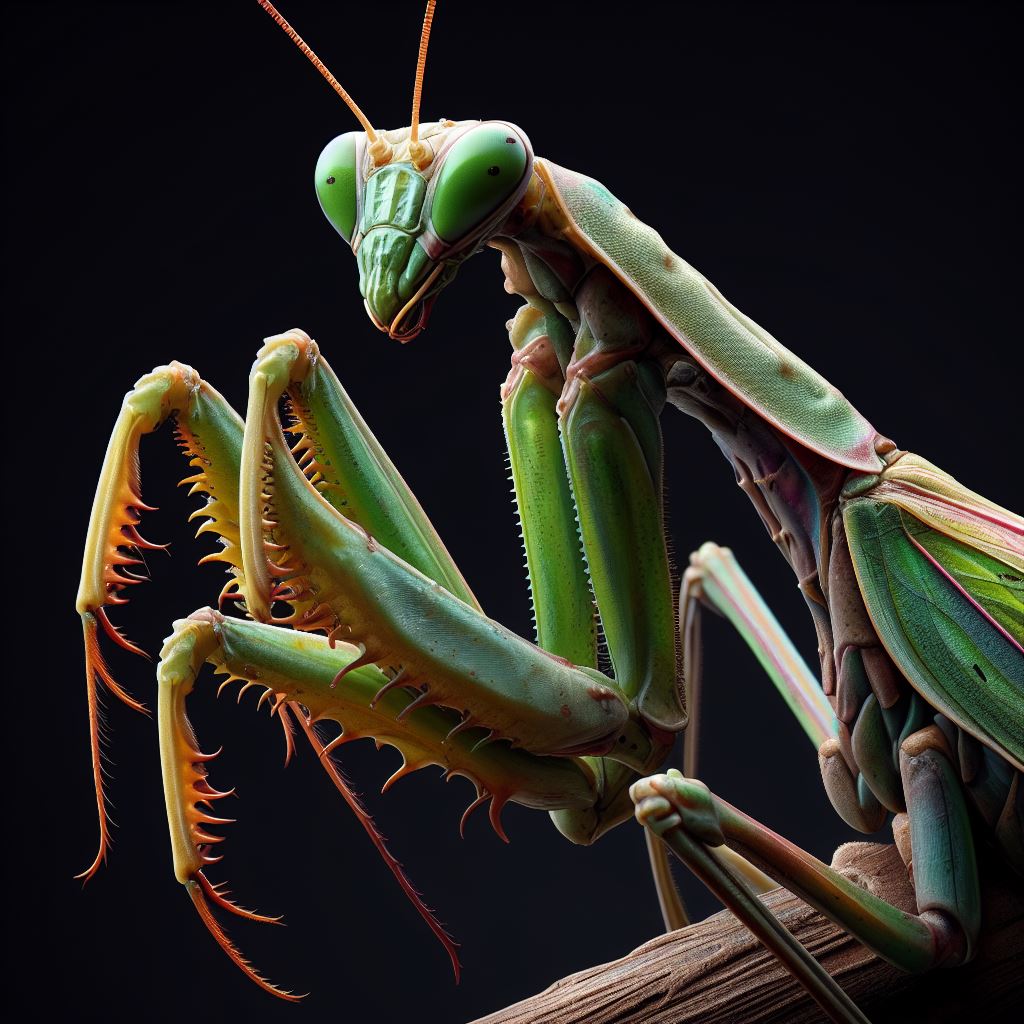Tarantulas, are those enigmatic arachnids that have captured human fascination for centuries. In the world of exotic pets, few creatures invoke such a mix of fear and intrigue as these eight-legged wonders. This article delves into the intricate world of tarantulas, from their taxonomic diversity to the nuances of caring for them as pets. Let’s unravel the mysteries and complexities surrounding these captivating creatures.
Species Name: Tarantulas
Taxonomy and Classification
Tarantulas, scientifically classified as Theraphosidae, represent a diverse group of arachnids, comprising numerous species and subspecies. Their taxonomy offers a window into the rich variety present in the tarantula family tree.
Diversity in Tarantula Species
Within the Theraphosidae family, tarantulas exhibit a staggering array of sizes, colors, and behaviors. From the massive Goliath birdeater (Theraphosa blondi) to the delicate Pink Toe tarantula (Avicularia avicularia), each species showcases unique attributes.
Notable Physical Characteristics
Tarantulas are characterized by their large, hairy bodies and distinct patterns. Some species boast vibrant hues, while others blend seamlessly with their natural surroundings. The sensory organs, including specialized hairs for detecting vibrations and chemical signals, make them finely tuned hunters.
Description of Tarantulas
Size and Body Structure
Typically, tarantulas feature robust bodies, with females generally larger than males. Their eight legs, each equipped with sharp claws, enable them to navigate diverse terrains with remarkable agility.
Variations in Colors and Patterns
Tarantula colors range from earthy browns and blacks to striking blues, greens, and even pinks. These colors serve as both camouflage and warnings to potential predators, emphasizing the intricate dance between survival and aesthetics.
Unique Features and Adaptations
Beyond their appearances, tarantulas possess specialized adaptations. Spinnerets, located at the rear end, allow them to produce silk for web-building and molting. Additionally, their fangs, equipped with venom, play a crucial role in subduing prey.
Habitat of Tarantulas
Natural Geographic Distribution
Tarantulas inhabit a broad range of ecosystems, spanning from deserts and grasslands to tropical rainforests. Their adaptability has allowed them to establish populations on nearly every continent, emphasizing their resilience.
Preferred Environmental Conditions
While specific requirements vary by species, most tarantulas prefer warm, humid environments. They seek out shelters like burrows or tree hollows, ensuring access to moisture and protection from predators.
Ecosystem Role of Tarantulas
In their natural habitats, tarantulas contribute significantly to ecological balance. By controlling insect populations, they prevent pest outbreaks and promote biodiversity. Their role as predators underscores their importance in maintaining the delicate harmony of ecosystems.
Diet of Tarantulas
Carnivorous Nature
Tarantulas are carnivorous hunters, preying on insects, small vertebrates, and even other spiders. Their diet primarily consists of grasshoppers, crickets, and beetles, although larger species may tackle small lizards and rodents.
Hunting Techniques and Predatory Behavior
Tarantulas employ a combination of stealth and speed in hunting. They patiently wait near burrow entrances or web entrances, sensing vibrations to detect potential prey. When the moment is right, they strike swiftly, injecting venom to immobilize their victim.
Preferred Prey Items in the Wild
In the wild, tarantulas exhibit remarkable dietary flexibility. Their menu includes a wide variety of invertebrates, showcasing their ability to adapt to the availability of prey in their respective habitats.
Feeding Habits of Tarantulas
Frequency of Feeding
Tarantulas are not voracious eaters; they consume sporadically, sometimes with intervals of weeks or even months between meals. This slow metabolism allows them to survive on relatively sparse diets.
Challenges in Captivity
Feeding tarantulas in captivity can present challenges, especially regarding the availability of suitable prey. Tarantula enthusiasts often breed feeder insects to ensure a steady supply, mimicking the diversity of their natural diet.
Recommended Diet for Pet Tarantulas
For pet tarantulas, a varied diet is essential for optimal health. Feeder insects like crickets, roaches, and mealworms, supplemented with occasional treats like waxworms, offer a balanced nutritional profile. Ensuring the prey is appropriately sized prevents overfeeding and potential harm to the tarantula.
Care Tips for Tarantula Owners
Proper Housing Requirements
Creating a suitable habitat is paramount for tarantula well-being. Enclosures should mimic their natural environment, offering hiding spots, proper substrate for burrowing, and climbing opportunities for arboreal species.
Temperature and Humidity Control
Maintaining consistent temperature and humidity levels within the tarantula enclosure is crucial. Heat mats and heat lamps provide warmth, while regular misting ensures the enclosure remains humid, replicating its native tropical conditions.
Social Needs and Interaction
Tarantulas are solitary creatures, and social interaction is unnecessary for their well-being. Handling should be limited to essential activities like enclosure cleaning or health checks, as excessive stress can harm them.
Exercise and Enrichment Activities
While not playful in the way mammals are, tarantulas do engage in natural behaviors such as web-building and burrowing. Providing suitable substrates and materials encourages these activities, contributing to their physical and mental stimulation.
Grooming Routines and Molting Process
Tarantulas molt periodically to grow. During this process, they shed their exoskeleton, revealing a larger, softer one beneath. Ensuring a stress-free environment during molting is crucial, as any disturbance can result in injury or molting complications.
Medical Care and Common Health Issues
Regular observation is key to detecting potential health issues early. Signs of distress, changes in appetite, or abnormalities in behavior warrant attention. Consulting a veterinarian experienced in exotic pets is essential for accurate diagnosis and treatment.
Necessary Equipment and Supplies
Suitable Enclosures and Substrate
Tarantulas require spacious, escape-proof enclosures with secure lids. Substrates like coconut fiber or peat moss provide a suitable base for burrowing and promote humidity retention.
Heating and Lighting Equipment
Heating equipment, such as heat mats, maintains optimal temperatures. While tarantulas do not require UVB lighting, a low-wattage heat bulb can create a day-night cycle, promoting natural behaviors.
Humidity Control Tools
Regular misting and the use of hygrometers help monitor and maintain humidity levels. Proper humidity prevents dehydration and aids in the molting process.
Food and Feeding Tools
A reliable supply of feeder insects, sourced from reputable breeders, ensures a balanced diet. Feeding tongs or small containers facilitate safe and controlled feeding interactions.
Handling and Safety Gear
When handling tarantulas for essential tasks, specialized tools like catch cups and soft brushes minimize stress. Additionally, gloves made from soft materials offer protection while handling.
Social Aspects of Tarantula Keeping
Community and Forums for Tarantula Enthusiasts
Online communities and forums provide a platform for Tarantula enthusiasts to share experiences, advice, and insights. These platforms foster a sense of camaraderie among keepers, promoting collective learning.
Sharing Knowledge and Experiences
Exchanging knowledge and experiences not only enhances individual understanding but also contributes to the collective wisdom of the tarantula-keeping community. From breeding tips to health remedies, shared wisdom benefits all enthusiasts.
Tarantula Conservation Efforts
Many tarantula species face threats from habitat destruction and the pet trade. Conservation organizations work tirelessly to protect these creatures and their habitats. Supporting these efforts is vital in ensuring the continued existence of these fascinating arachnids.
Common Misconceptions about Tarantulas
Myths vs. Facts
Tarantulas have endured numerous myths and misconceptions, often portrayed as aggressive or dangerous. In reality, most tarantulas are docile and prefer flight over fight. Educating the public about their true nature is essential in dispelling these myths.
Dispelling Fear and Stereotypes
Fear of tarantulas, known as arachnophobia, is prevalent. Education and exposure therapy can help individuals overcome this fear, leading to a deeper appreciation of these remarkable creatures.
Importance of Education in Tarantula Keeping
Education forms the foundation of responsible tarantula ownership. Understanding their biology, behavior, and specific care requirements is paramount. Ongoing education ensures the well-being of both the tarantula and its owner.
Culture and History
Tarantulas in Ancient Civilizations
Tarantulas have woven themselves into the fabric of human culture since ancient times. From symbols of fear to representations of mystery, they have influenced mythology, art, and folklore across various civilizations.
Tarantulas in Literature and Arts
In literature and the arts, tarantulas have inspired countless works. Their enigmatic nature, often associated with magic and mysticism, has intrigued writers, painters, and filmmakers, resulting in diverse and imaginative depictions.
Symbolism and Cultural Significance
Tarantulas have held symbolic significance in different cultures. While some view them as omens or protectors, others associate them with transformation and rebirth. Exploring these cultural interpretations adds depth to the tarantula’s mystique.
Famous Tarantula Species
Notable Species in the Tarantula World
Certain tarantula species have achieved fame within the arachnid community. Whether due to their size, coloration, or behavior, these species serve as ambassadors for their kind, captivating enthusiasts and researchers alike.
Remarkable Behavioral Traits
From elaborate courtship dances to intricate web designs, tarantulas exhibit a plethora of fascinating behaviors. Studying these traits not only enhances our understanding of tarantulas but also provides insights into the broader world of animal behavior.
Contributions to Scientific Research
Tarantulas are subjects of extensive scientific study, contributing valuable information to fields such as biology, physiology, and neurology. Their venom, silk, and unique anatomical features have inspired innovations in medicine and materials science.
Fun Facts about Tarantulas
Intriguing Behavioral Patterns
Tarantulas engage in behaviors that baffle and amaze researchers. From communal living arrangements to peculiar mating rituals, their behavior offers a glimpse into the complexity of arachnid social structures.
Unique Defense Mechanisms
Tarantulas possess an arsenal of defense mechanisms. While some species rely on venomous bites, others utilize urticating hairs, which they flick at predators. Understanding these defenses illuminates the intricate balance between survival and adaptation.
Surprising Longevity and Lifespan Records
Tarantulas boast impressive lifespans, with some species living several decades. Their longevity challenges traditional notions of arthropod life cycles, raising questions about the factors contributing to their extended existence.
Conclusion
In the intricate tapestry of Earth’s biodiversity, tarantulas stand as testaments to nature’s creativity and adaptability. As we unravel their complexities, we find not only a source of fascination but also a profound respect for the delicate balance that sustains life on our planet. Responsible tarantula ownership, coupled with continuous education and conservation efforts, ensures that these enigmatic creatures continue to captivate and inspire generations to come.




